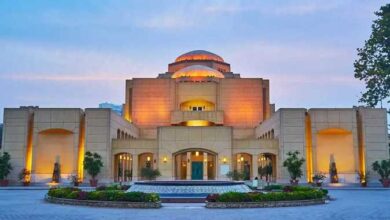Talaat Zakareya: You must have heard of what’s going on in Tahrir Square.
Bassem Youssef: No, what, what?
Z: Drums and horns and dancing… girls… and boys… and drugs… and full sexual relations… it’s a carnival…
Y (on the phone to a friend): Didn't I tell you we should go to Tahrir Square? They're saying there's music, women and sex. And we're still sitting here?
— From the Bassem Youssef show
A few weeks ago, Bassem Youssef, a 37-year-old Cairo heart surgeon, was not known beyond his circle of friends. Now his comedic YouTube channel has become one of the most widely viewed in Egypt, with his many fans comparing him to the Daily Show’s Jon Stewart.
Since Mubarak stepped down on 11 February, Youssef has been meeting with producer Amr Ismail, cinematographer Tarek Abdel Hameed and director Mohammed Khalifa every Friday in his suburban Cairo flat. Together they re-edit video clips from the media’s coverage of the 25 January revolution — statements made by actors, TV hosts and public figures — into fictional conversations, which Youssef stages on his Youtube talk show.
Envisioned as a media watchdog, the show is equally inspiring and entertaining. And Youssef is not the only Egyptian who veered from the protocols of their day job to create revolution-related art that comments on Egyptian media coverage.
On 9 February, Egyptian comedian Talaat Zakareya bashed the pro-democracy protesters at Tahrir Square during a live talk show. For his show, Youssef matched accusations Zakareya made with documentary footage, exposing their absurdity and the partiality of media coverage at the time. In this episode, Youssef runs a video of State Security forces violently clashing with demonstrators after Zakareya’s testimony that protesters engaged in full sexual relationships at the square.
Although the media is still constrained by some taboos, Youssef’s show attempts to make media reporting more critical, at least in the relatively unrestrained space of the internet.
Similarly, 24-year old Khaled Haddad filmed events as they unfolded throughout the 18 days of revolt. “The world needs to see this and future generations must know what was happening,” the amateur filmmaker told Al-Masry Al-Youm.
Protesters as well as casual visitors to the square tried to capture the spirit of the revolutionaries by photographing the colorful anti-regime placards and recording people singing and dancing, using both cellphones and hand-held cameras. Many of the images are now being exhibited in cultural centers across town.
In Tahrir, performances took root. Some of them were the result of professional efforts, like the Genaina Theater — held every summer at al-Azhar Park — and professional bands like Eskenderella performing songs like Sayed Darwish’s “Oum Ya Masry” (Wake up Egyptians) and Sheikh Imam’s “Ya Masr Komy Shedy Elheel” (Rise again Egypt) to boost public morale.
Other musical acts were less professional, but no less interesting. Ahmed Metwalli, an electric engineer in his twenties, sang for the first time to a growing audience. Metwalli’s original lyrics narrated how he was detained by State Security forces in 2004 for befriending a Muslim Brother.
Much of the artwork, too, that characterized the square was the result of amateur artists. Witty signs calling for the fall of the regime hung all over the place, many of them were designed collectively. Ahmed Zahran, for instance, a calligrapher in his forties, worked with protesters every morning from 6 am until noon, designing the signs and tweaking the slogans with well-known Egyptian proverbs and Arabic poetry.
On 10 February, after Mubarak gave his last speech as president, refusing to step down, Zahran borrowed a poetic verse from the Umayyad satirical poet al-Farazdak, which reads, “Two donkeys can only give birth to a donkey” to express the people’s frustration with the speech.
Zahran contributed another piece on 1 April, painting Field Marshal Mohamed Hussein Tantawi — head of the Supreme Council of the Armed Forces — writing next to it, “I cannot see, I cannot hear, I cannot speak,” an adaptation of the three wise monkeys proverb, “See no evil. Hear no evil. Speak no evil.” This, he explained, as passers-by helped him color the piece, was meant to reflect people’s disappointment with the delayed prosecution of Mubarak and his family.
Now that the Tahrir sit-ins are over, Zahran has been joining people elsewhere to support their cause. One initiative he’s working on through poster and graffiti design is promoting reconciliation between the public and police forces to keep the streets safe.
“Although I’m working full time again, I will continue to support causes I believe in,” he says.




